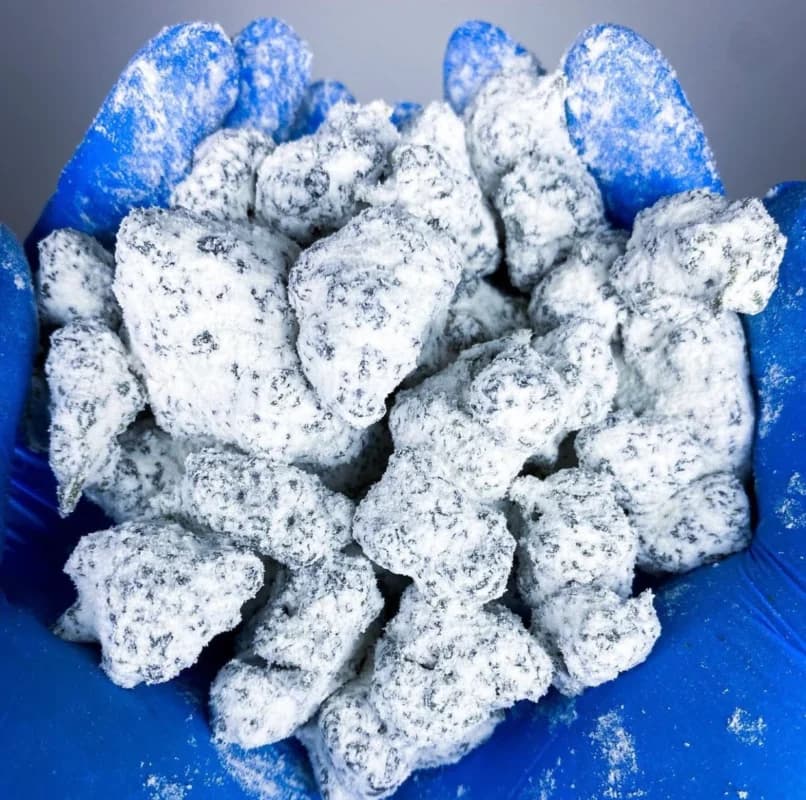How to Grow Snow Caps Weed: A Step-by-Step Guide for Beginners
Introduction
Snow Caps Weed is a strain that captivates cannabis enthusiasts with its frosty trichomes, high THC content, and unique flavor profile. Growing this strain can be a rewarding experience, especially if you want to cultivate a top-tier hybrid with excellent aesthetics and potency. Whether you’re a beginner or a seasoned gardener looking to grow your first cannabis crop, this guide will walk you through the process step-by-step, from selecting seeds to harvesting your frosty Snow Caps buds.

Why Grow Snow Caps Weed?
Cost Savings
Growing your own Snow Caps Weed can save you money in the long run. Instead of purchasing premium-quality cannabis, you’ll have a personal stash cultivated to your exact preferences.
Control Over Quality
Home cultivation allows you to control every aspect of the growing process, ensuring your cannabis is free from harmful pesticides and meets your desired potency and terpene profile.
A Fulfilling Hobby
Cannabis cultivation can be a therapeutic and rewarding hobby. Watching your plants thrive and produce beautiful, frosty buds is a satisfying experience.
Step 1: Gather the Essentials
Before you start, ensure you have the necessary equipment and materials. Here’s what you’ll need:
Seeds or Clones
Choose high-quality Snow Caps Weed seeds or clones from a reputable supplier. Seeds should be feminized to ensure they produce buds, not male pollen sacs.
Growing Medium
You can grow Snow Caps Weed in soil, coco coir, or a hydroponic system. For beginners, soil is the easiest option as it’s more forgiving and provides natural nutrients.
Grow Space
Decide whether you’ll grow indoors or outdoors:
- Indoors: Requires a grow tent or a dedicated space with controlled lighting and ventilation.
- Outdoors: Suitable if you live in a region with a favorable climate, typically warm and sunny.
Lighting
Cannabis requires specific light cycles for optimal growth:
- Use LED grow lights or high-pressure sodium (HPS) lights for indoor grows.
- Outdoors, make sure your plants receive at least 6-8 hours of direct sunlight daily.
Nutrients
Snow Caps Weed thrives on a balanced diet of macronutrients (nitrogen, phosphorus, potassium) and micronutrients (calcium, magnesium, iron). Purchase cannabis-specific fertilizers for the best results.
Ventilation
Proper airflow prevents mold and ensures your plants receive fresh carbon dioxide. Use an exhaust fan, oscillating fans, or natural wind for ventilation.
Water and pH Meter
Cannabis prefers slightly acidic water with a pH range of 6.0–7.0 in soil. Invest in a pH meter to maintain optimal water quality.
Step 2: Germinate Your Seeds
The Paper Towel Method
- Place your Snow Caps seeds between two damp paper towels.
- Put the paper towels inside a plastic bag or on a plate, then cover with another plate to create a dark, humid environment.
- Keep the setup in a warm place (70–80°F or 21–27°C).
- Check daily, and within 2–7 days, your seeds will sprout small white taproots.
Step 3: Planting Your Germinated Seeds
- Fill small pots or seedling trays with nutrient-rich soil.
- Make a small hole about ½ inch deep in the soil.
- Gently place the germinated seed, root side down, into the hole and cover lightly with soil.
- Water the soil lightly to keep it moist but not soggy.
Step 4: Vegetative Stage
Light Cycle
During the vegetative stage, cannabis requires 18–24 hours of light per day. Use a timer to maintain a consistent light schedule.
Watering
Water your plants when the top inch of soil feels dry. Avoid overwatering, as it can lead to root rot.
Feeding
Feed your plants with a nitrogen-rich fertilizer to support healthy leaf and stem growth. Follow the manufacturer’s instructions for dosage.
Training Your Plants
To maximize yield, consider low-stress training (LST) or topping:
- LST: Bend and tie down branches to expose more bud sites to light.
- Topping: Cut the main stem above a node to encourage the growth of multiple colas.
Step 5: Flowering Stage
The flowering stage is when your Snow Caps Weed plants begin producing buds. This phase typically lasts 8–10 weeks.
Light Cycle
Switch to a 12/12 light cycle (12 hours of light, 12 hours of darkness) to trigger flowering.
Nutrient Adjustments
Reduce nitrogen levels and increase phosphorus and potassium to support bud development.
Temperature and Humidity
- Temperature: Maintain a range of 65–80°F (18–27°C).
- Humidity: Reduce humidity levels to 40–50% to prevent mold growth on the buds.
Monitoring Trichomes
Keep an eye on the trichomes (the frosty crystals on the buds). They will change from clear to cloudy to amber as the plant matures. Harvest when the majority of trichomes are cloudy with some amber, indicating peak potency.
Step 6: Harvesting Your Snow Caps Weed
When to Harvest
Signs your Snow Caps Weed is ready for harvest include:
- Pistils (hairs) turn orange or brown.
- Trichomes appear cloudy and amber.
- Leaves begin to yellow as the plant redirects energy to the buds.
How to Harvest
- Cut the plants at the base of the stem using sharp scissors or pruning shears.
- Remove large fan leaves but leave smaller sugar leaves for the drying process.
Step 7: Drying and Curing
Drying
- Hang your harvested buds upside down in a dark, well-ventilated space with a temperature of 60–70°F (15–21°C) and humidity of 50–60%.
- Allow the buds to dry for 7–10 days until the stems snap rather than bend.
Curing
- Place the dried buds in airtight glass jars, filling them about 75% full to allow airflow.
- Store the jars in a cool, dark place, opening them daily for 10–15 minutes to release moisture and prevent mold.
- Cure for at least 2–4 weeks to enhance the flavor, potency, and aroma of your Snow Caps Weed.
Step 8: Storing Your Snow Caps Weed
To preserve the quality of your buds:
- Store them in airtight containers.
- Keep them in a cool, dark place away from direct sunlight and heat.
- Use humidity packs to maintain ideal moisture levels.
Common Challenges and Solutions
Pests
Use organic pest control methods like neem oil or predatory insects (e.g., ladybugs) to protect your plants.
Nutrient Deficiencies
Monitor your plants for signs of yellowing, spotting, or curling leaves, which may indicate nutrient imbalances. Adjust your feeding schedule as needed.
Overwatering or Underwatering
Maintain a consistent watering schedule and ensure proper drainage to avoid root-related issues.
Conclusion
Growing Snow Caps Weed may seem intimidating at first, but with patience, preparation, and attention to detail, you can cultivate your own frosty, high-quality buds. From selecting seeds to curing your harvest, each step plays a crucial role in producing cannabis that rivals dispensary-grade products. Whether you’re growing for personal use or simply as a hobby, the satisfaction of enjoying homegrown Snow Caps Weed makes the effort worthwhile.
By following this guide, beginners can embark on a successful cannabis cultivation journey, unlocking the full potential of this iconic strain. Happy growing!
